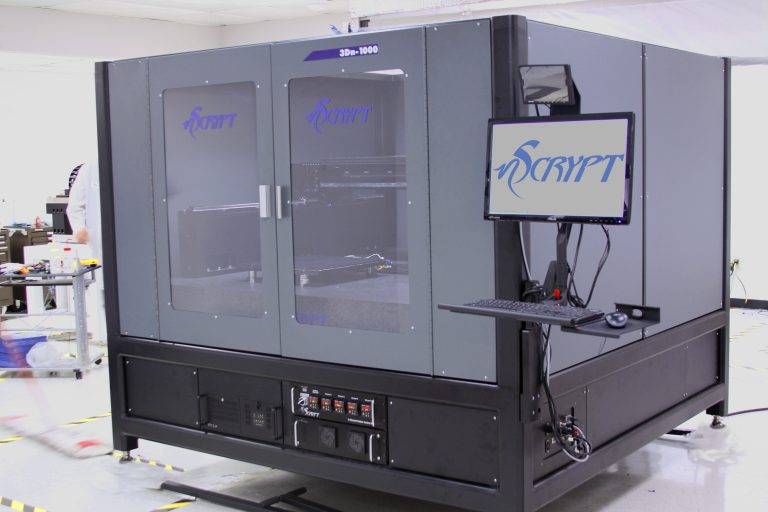Florida-based nScrypt, which manufactures industrial systems for micro-dispensing and 3D printing, is already seeing its technology used for military applications with the US Army. But now the US Air Force has jumped on the nScrypt bandwagon as well. Sciperio, nScrypt’s research and development think tank, was awarded a second phase contract by the Air Force for its 3D printed conformal phased array antennas project.
Sciperio specializes in cross-disciplinary solutions, and developed technology that was commercialized by nScrypt under the Mesoscopic Integrated Conformal Electronics (MICE) program with the Defense Advanced Research Projects Agency (DARPA). In 2016, the research group developed the first fully 3D printed phased array antenna for the Air Force, and has continued attempting to conform these antennae to complex surfaces, which would allow advanced communication technology to be added directly into an aircraft or vehicle body.
A phased antenna array uses both constructive and destructive interference to individually control each element’s signal phase and precisely “aim” the signal, instead of radiating it out in multiple directions. This feature is critical in terms of military applications, as it makes communications more secure and less likely to be intercepted by the enemy.
“Directly printing active phased array antennas on curved surfaces will provide unique capabilities to the DoD (Department of Defense), but the ultimate goal is to do this at a fraction of the cost of traditionally manufactured arrays,” said Casey Perkowski, Sciperio’s Lead Developer on the project. “This will allow the DoD to use these antennas in a more ubiquitous manner and this will translate to commercial applications.”
Not only is this technology important for the military, but it’s also vital to nScrypt’s vision of fully 3D, non-planar next generation electronics that will either conform to, or be embedded in, an object’s structure. At present, PCBs are placed into boxes and connected with unwieldy wiring harnesses; nScrypt is working toward a future where the PCB, box, and harness will be depleted so electronics can be smaller, less expensive, more lightweight, and integrated directly into the structure.
nScrypt’s Direct Digital Manufacturing platform, called the Factory in a Tool (FiT), enables the company’s vision of integrated electronics. The FiT has multiple tool heads, including nScrypt’s nFD for Material Extrusion, the SmartPump for Micro-Dispensing, nMill for micro-milling, and nPnP for pick and place of electronic components, which are placed on a high-precision (1 micron accuracy) linear motion gantry. Multiple cameras allow for automated inspection and computer vision routines, while a point laser height sensor maps surfaces.
All of these features add up to allow for successful conformal printing, or micro-dispensing, onto objects. Because everything is combined in one platform, manufacturers of complex structural electronics can create them with the press of a button.
nScrypt and Sciperio bring an additional advantage to the table in their projects for the DoD: high-precision motion and micro-dispensing excels. Each dimension in RF electronics is critical, and if a line is off by even the smallest fraction, the circuit’s performance is ruined, and so is that of the device with which it’s being used.
But the previously mentioned SmartPump offers picolitre volumetric flow control, while the nFD extruder provides precision deposition and the motion platform has 0.5 micron repeatability. This means that nScrypt’s unique platform can produce both conductive and dielectric features to high tolerances…ensuring successful RF circuits for the DoD.
The goal of the Air Force project that nScrypt and Sciperio are working on is to produce an 8 x 8 element array on an ellipsoidal surface. The University of South Florida is a subcontractor on the project, as it previously worked with Sciperio back in 2016 to develop the first fully 3D printed phased array antenna, and will once again support antenna design, simulation, and testing.
Source: 3dprint



